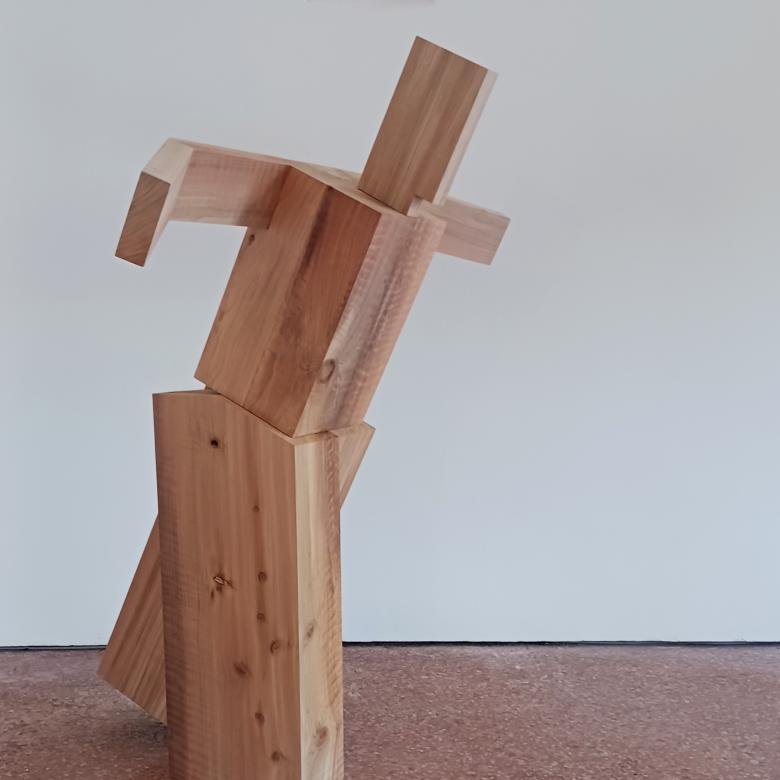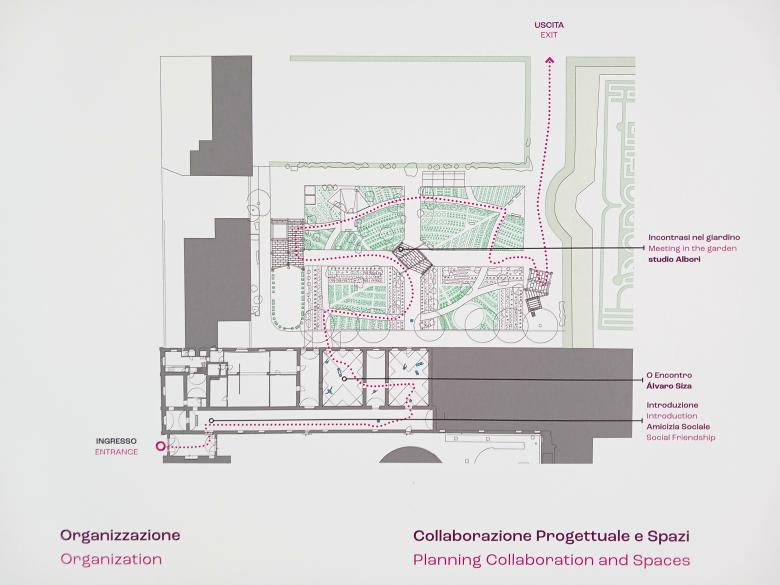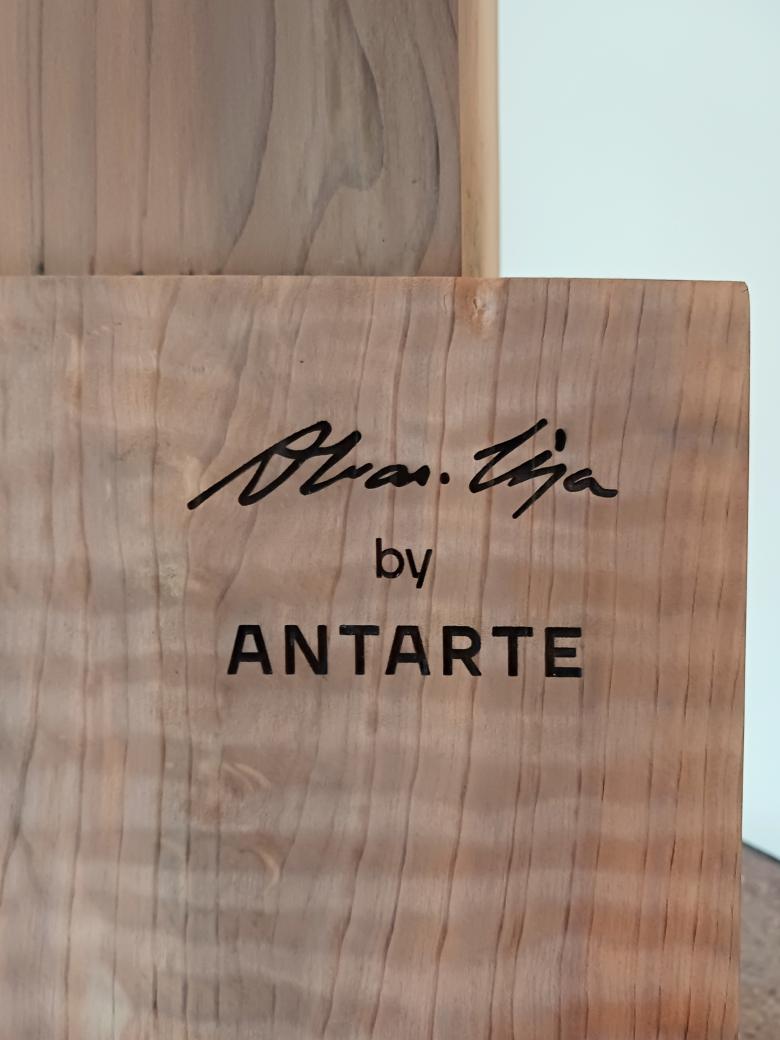1. June 2023
Photo: John Hill/World-Architects
One of the most unexpected contributions to a national pavilion at this year's Venice Biennale is the figural sculptures Portuguese architect Álvaro Siza made for the Holy See Pavilion on the island of San Giorgio Maggiore.
Ahead of my visit to San Giorgio Maggiore a day after the Venice Architecture Biennale opened on May 20, I had read very little about the Vatican's contribution to the exhibition. The Holy See's first national pavilion, in 2018, curated by Francesco Dal Co and consisting of ten full-size chapels on a previously off-limits section of the island, was greeted with much fanfare. While the chapels remain (they were intended to be donated to churches around the world but were never removed from the island), the same anticipation and reception has not (yet) greeted this year's Holy See Pavilion — surprising given the inclusion of Pritzker Prize-winning architect Álvaro Siza.
The layout of the Holy See Pavilion in the gallery and garden of the Benedictine Abbey of San Giorgio Maggiore.
The theme of this year's Holy See Pavilion, which coincides with the tenth anniversary of the election of Pope Francis, is “Social friendship: meeting in the garden.” It follows from encyclicals written by Francis, specifically Laudato si' (On Care For Our Common Home, 2015) and Fratelli tutti (On Fraternity and Social Friendship, 2020). The latter reads, in part: “I have frequently called for the growth of a culture of encounter capable of transcending our differences and divisions,” and, “we, as a people, should be passionate about meeting others, seeking points of contact, building bridges, planning a project that includes everyone.”
The theme's execution is articulated by Mirko Zardini, who was, per a Holy See press release, “responsible for the scientific project ‘Social friendship: meeting in the garden’”: “At a time, and on an occasion such as the Venice Architecture Biennale, when architecture's presence is often linked more to words than to deeds, we preferred to propose some modest actions, to initiate processes, to present concrete facts such as cultivating a vegetable garden, reusing materials, creating a place for conversations. Not a proliferation of words or activities, but a place of pause and quiet, of silence, where to reflect on how, and from where, to start again.”
A photograph of the model, as displayed in the exhibition, showing the garden adjacent to the Abbey and Campanile of San Giorgio Maggiore.
The Holy See Pavilion was curated by architect Roberto Cremascoli, who previously curated the 2016 Portuguese Pavilion with Nuno Grande; that pavilion also involved Álvaro Siza but was located on the island of Guidecca (Portugal does not have a permanent pavilion, such that this year it is located in Palazzo Franchetti near the Accademia Bridge). Cremascoli laid out the Holy See Pavilion so visitors walk down a long gallery in the abbey with photographs and other illustrations that reveal the process of Siza's installation, O encontro (The Encounter), and Studio Albori's garden. Following the intended route (see plan above), visitors then encounter Siza's sculptures (“Social friendship”) in a trio of rooms before heading outside and experiencing Studio Albori's interventions in the garden (“meeting in the garden”).
A marble sculpture is located at the end of the long gallery where photographs, drawings, and other illustrations are displayed on one wall.
A matching marble sculpture is found in the garden, where Studio Albori added a chicken coop, seed store, pergolas, and seating, among other elements.
The blocky figural sculptures by Siza are revealed gradually, first in drawings and photographs of models.
The sculptures in the first room depict figures that are contorting in ways that, like the drawings/models above, make them resemble chairs.
But the sculptures in the next rooms are erect, striking various poses with their “arms” and other body parts.
Pope Francis's “seeking points of contact” finds form in a wooden figure that appears to want a hug.
Siza's wood sculptures were fabricated by Antarte, a furniture maker from Portugal.
Location: San Giorgio Maggiore
Commissioner: Cardinale José Tolentino de Mendonça, Prefetto del Dicastero per la Cultura e l’Educazione della Santa Sede
Curator: Roberto Cremascoli
"Scientific Project": Mirko Zardini
Architect (sculptures): Álvaro Siza
Architect (landscape): Studio Albori (Emanuele Almagioni, Giacomo Borella, Francesca Riva)
Manufacturer (sculptures): Antarte









